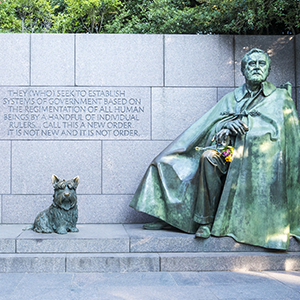After the first day of seventh grade, Paris Ye, Angelica Frude and Lydia
Yeh came together for an assigned research project at Eastern Middle School
in Montgomery County, MD. Nine months later they were winners of the 2018
National History Day Contest. The three have become best friends after
bonding and trusting each other throughout the school year..
The National History Contest took place during the 2017/18 school year,
where 3,000 students from more than 500,000 groups presented their work
based on the year’s theme – “Conflict and Compromise.” Categories are
separated into senior and junior divisions, which then split into different
presentations, from documentaries to websites, the latter of which the
three won third place nationally.
The girls’ project was titled, “The FHA’s (Federal Housing Administration)
Effect on Black Housing: The Legalization of Segregation in American
Neighborhoods.” They researched how the New Deal’s program was responsible
for segregating neighborhoods and creating a wealth gap between white
people and people of color.
When doing research, Lydia jokes that they skipped gym class “because it
was unnecessary,” but they also spent lunch periods at the computer labs or
with teachers to receive continued input. They also stayed up regularly
until midnight, communicating with each other via computer for active
feedback.
One obstacle Lydia points out was when Paris had to leave early for another
commitment before the editing for the website locked down at 12:00
midnight. She noticed a section of text that kept glitching, but eventually
worked out in the end.
“We tried to fix it and delete the paragraph,” Lydia says, “but it said it
was locked out, and we were freaking out. We finally got it to work
somehow, and it appeared at 11:50 p.m. just before the deadline.”
Another thing they note is how there were contradicting comments among the
judges, so they didn’t know where to improve or expand from their research.
“One judge was like, ‘Your topic doesn’t really fit this theme,'” Lydia
says, “but the other one said, ‘Your topic fits this theme perfectly.’ They
were so contradictory.” She noted that different judges were back-and-forth
on their opinions with web design and sources, among other aspects.
They recall one person who was an important help to them was Ryan Flynn,
their Humanities English teacher and former National History Day judge.
Lydia remembers how supportive he was of them, providing a calm assurance
to the self-described “worrisome” trio that everything was fine and would
be all right. Flynn also invited them to give mock presentations in his
classroom ahead of their official one.
Flynn also played a role in recommending the color palette for the website.
“If you open up our website, you’ll see that everything’s monochromatic,”
Paris says. “Originally we had it just black-and-white for symbolism, but
since we talked about redlining, he said we should use red lines across.”
The term “redlining” was the practice of government officials to outline
select areas of neighborhood maps in red to show where it was safe for
banks to provide mortgages.
Lydia elaborates that he treated them maturely, a trait the three
especially admired.
“He talked to us like we were actual peers,” Lydia says. “He wouldn’t ever
tell us that we would have to do this or that. He would always say, ‘Here’s
something that I think would help.'”
They describe how other teachers had a patronizing tone, behaving like they
were above the students because they knew more.
“When Mr. Flynn gave a suggestion,” Paris says, “when he saw that we didn’t
want to do it, he’d be like, ‘O.K., that’s fine.’ He would give us the
freedom to do everything.”
Lydia says her aim for this project was to educate people about how the FHA
caused a wealth gap for people of color in specific neighborhoods. She
notes that her teachers were surprised by the girls’ research, since this
is an unknown topic in public schools that carries long-term consequences.
They note that it was shocking to them that the FHA’s discrimination was
public record in the ’30s, citing the 1934 and 1936 manuals as examples.
They say the lack of compromise in relation to the theme was to be ironic,
as redlining and segregated neighborhoods still affect the U.S. today.
“This is something that’s going on today,” Angelica says. “It’s something
prominent in society. The wealth gap is widening and it will continue to
widen if there’s not a solution.”
The three say that they are proud to accomplish something without their
parents’ help and that it brought them together as best friends, while
learning about being punctual, on-track and together for extended amounts
of time.
“We would trust each other,” Lydia says. “‘O.K., one is gonna do this, the
other one is gonna do this.’ I trust that they will. Even if one didn’t,
you learned to forgive … I could be very critical about stuff like
this.”
Angelica points out how the contest taught her professional researching
skills, and Lydia says it was incredible to meet people from all over the
world when presenting.
“I’m surprised I even did this,” Paris says. “You have to dedicate a lot of
time. You just have to push through.” Check out the girls’ multimedia
presentation on “The FHA’s Effect on Black Housing: The Legalization of
Segregation in American Neighborhoods” at
http://65159994.weebly.com/
The 2019 National History Day Contest will be held June 9-13 at the
University of Maryland, College Park. nhd.org/nationalcontest


